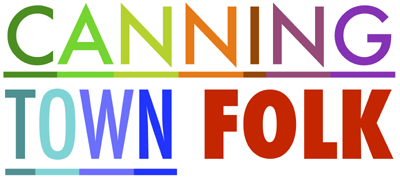When I first moved to Canning Town, a quarter of a century ago, I knew it was a very poor but vibrant and diverse area, where the community had a history of working together to make life better for themselves and others. I also knew that it featured in some of my favourite girls' books from the first half of the 20th century, the Abbey books by Elsie J. Oxenham, and that Oxenham's character 'the Pixie' (Daisy Caroline Daking) was a real woman who had worked in Canning Town and Plaistow in the 1920s, teaching folk dancing to local children and adults at the Y.M.C.A. Later, at the end of the 1980s, when I began an MA by Independent Study at the University of East London looking at the school stories of Elinor M. Brent-Dyer, I was delighted to discover that one of the University's buildings was, originally, the Y.M.C.A. building described in such loving detail by Oxenham in her books. When I went on to research for a PhD in Communications and Image Studies at the University of Kent at Canterbury in the 1990s, using girls' stories as the lens through which to view the position of girls and women during the 20th century, my favourite author remained Elsie J. Oxenham.
However, it was only when, at the beginning of this century, Girls Gone By began to republish unabridged versions of some of Oxenham's earlier books that I discovered the link between Canning Town and Maud Karpeles, one of the founders of the English Folk Dance and Song Society (EFDSS). And I was fascinated to discover that children from Canning Town had played their own part in the process, demonstrating folk dancing for Cecil Sharp at Stratford-upon-Avon and Kensington in the months leading up to the official founding of the Society in 1911, with a programme that many experienced adult folk dancers would find taxing today. Mary Neal's Esperance Girls have played their rightful place in folk dance history, but until now the Canning Town children's contribution has remained unacknowledged. As with the Canning Town children, all three of the women featured in this exhibition - Maud Karpeles, Daisy Caroline Daking and Elsie J. Oxenham - have often been overlooked, or have been seen as mere footnotes in history. I hope that 'Canning Town Folk' goes some way to restoring the balance as the English Folk Dance and Song Society approaches its centenary in 2011. The late political campaigner Margaret Simey, who as a girl featured herself as a character in Oxenham's books, once described the folk dance world of the 1920s to me as being a 'world of women'. With the death of four out of six of Cecil Sharp's male demonstration team in the First World War, along with a whole generation of young men, the women featured here played a key role in ensuring English folk dancing's survival today. They also, all of them, illustrate in their different ways the impact that a dance teacher can make.
I hope, too, that the exhibition illustrates the rich cultural history of Canning Town and its people, described by Charles Dickens as being 'Londoners over the border'. Canning Town - when people have heard of it at all - is all too often dismissed as being crime-ridden (untrue), racist (not only is this untrue, but the exhibition demonstrates that, from the start, Canning Town has had the most culturally diverse population in Britain) and otherwise without interest (couldn't be further from the truth, as this exhibition shows). I am proud to call Canning Town my home, am proud of my neighbours and proud of our young people, and extremely pleased that I have been able to play a part in helping all of us Canning Town Folk - whether newly arrived or established in the area for generations - to be proud of our heritage. The exhibition has now started its tour in Canning Town, and this website will be updated regularly as it progresses. Let me know about your Canning Town Folk facts and memories via the guest book, and watch out too for the art work that I am now making in response to the history presented here. Ju Gosling aka ju90, September 2010 Text © Ju Gosling aka ju90 2010
|
||||||||





